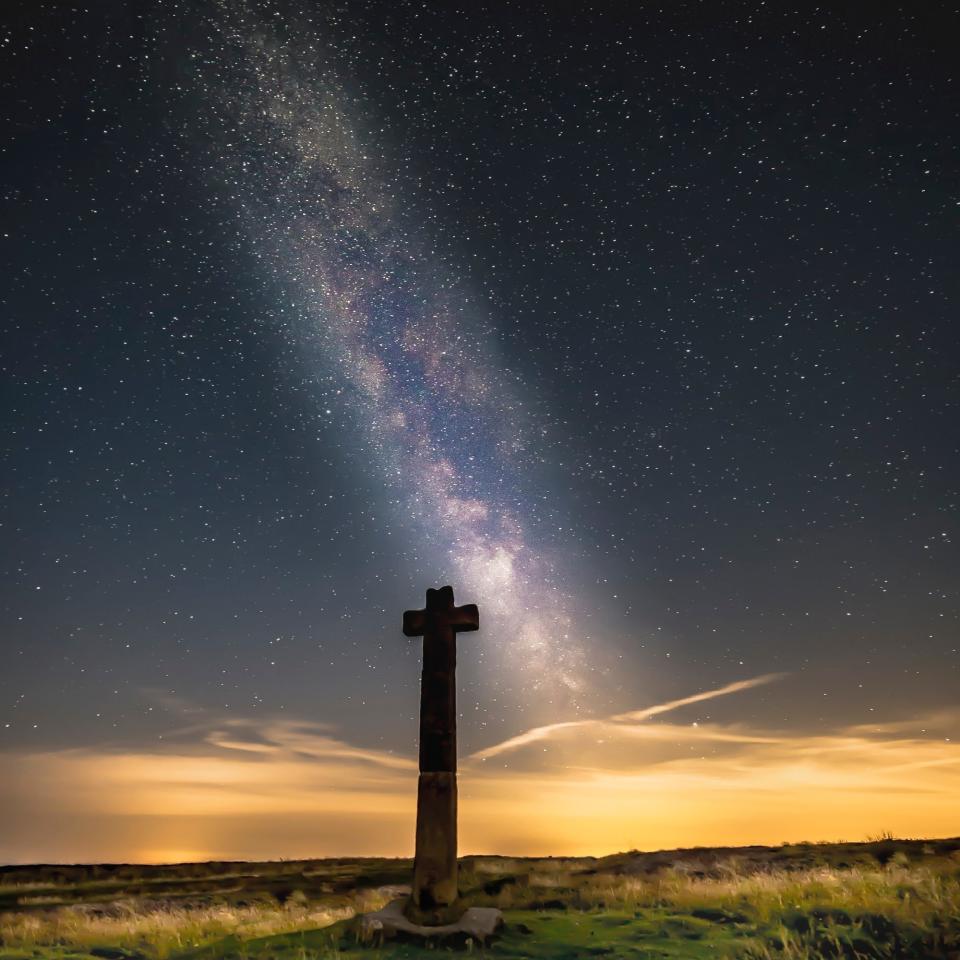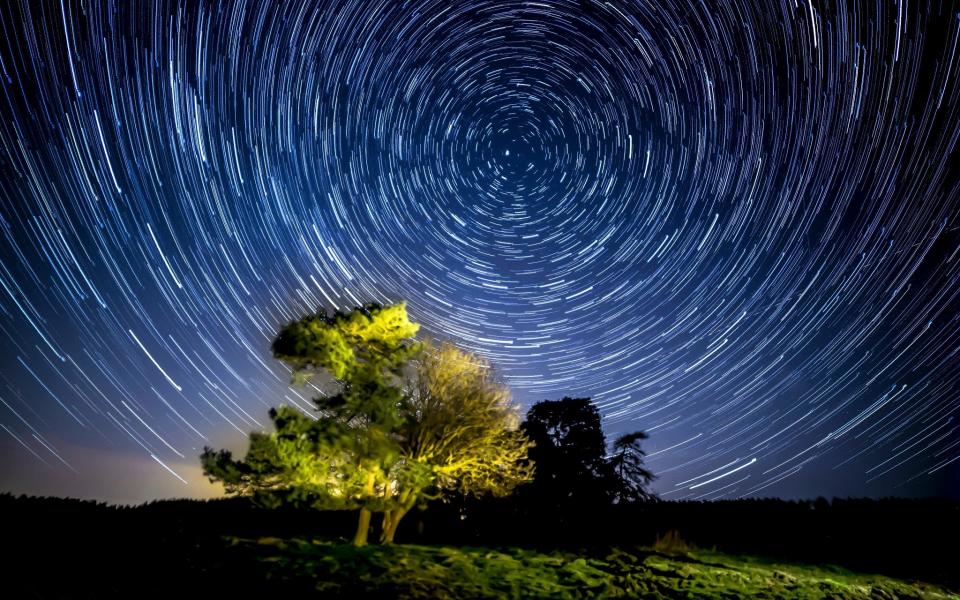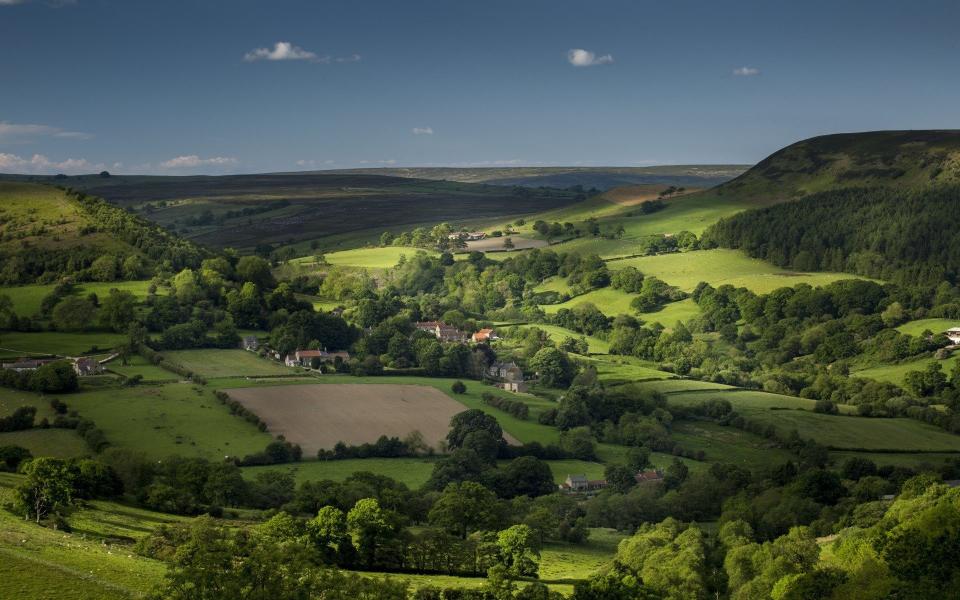Should I bring a headlamp, I wonder? Or maybe some emergency flares? I’m heading to the North York Moors, a few miles from the welcoming lights of a city, to spend the night in England’s first Dark Skies Friendly Village. Located in a warren of country lanes, Hawnby (population 193) is fighting back against the modern scourge of light pollution.
“It’s not about turning off the lights and plunging into the darkness,” assures Mike Hawtin of the North York Moors National Park, “but about a better way of doing things.” Hawtin, who loves the Darth Vader-esque sounding job title of ‘Dark Skies Officer’, explains that ‘tranquility’ has always been a big thing for the National Park (declared an International Dark Sky Reserve in 2020) as part of the Park’s two roles: ‘protect and preserve’ and ‘promote enjoyment’. Reducing unnecessary and intrusive lighting – more than 30 percent of wild animals are nocturnal, he emphasizes – is seen as very worthwhile.
Unlike other Dark Sky places – such as Presteigne in Wales – the entire village of Hawnby has embraced the project: the lighting has changed to houses, commercial buildings and street lights (to be fair, there are only two of the latter), with farms next on the list.


So how dark is it? As I walk down Hawnby’s sloping main street – the village is in two parts, with a cluster of buildings at the bottom near the River Rye and another around The Owl in the Hawnby pub at the top – I notice two things. Firstly, the light shines only where it is needed – over front doors, at gates, on the corners of buildings – and does not radiate across the road, into neighbours’ gardens or, crucially, into the sky.
“In the past, light was thrown indiscriminately; up, down, left, right, in-your-face, but not on target where necessary,” Hawtin explains, adding that color – the Kelvin value – is just as important. “The higher rating, about 6,000K, is bluer and mimics daylight. It also disperses more easily in the atmosphere, so there is more shine. Warmer light scatters less.” The combination of lower Kelvin light bulbs and directional lighting fixtures – gooseneck or traditional carriage lights – had created the Christmas card-like golden glow that guided me through the village.


Some residents expressed reservations (the National Park paid for the facility, 50 to 75 percent of the total; owners paid for its installation), mainly due to mobility and safety concerns. “They didn’t realize that so much light could come from something pointing downward,” says Hawkin. Passive safety lights still cause problems, I understand from a number of locals, but these are being “resolved”.
My second revelation is how loud the countryside can be. I suspect this is because, with less visual distraction, my hearing becomes sharper. The stream along the road sounds like a raging river, a lone rider one evening sounds like a troop, hooting owls sound eerily close, and a horn of buzzing and screeching makes me jump into the middle of the road as a single pheasant darts out of the way . the edge.
“Ever since they changed the lighting, owls are worth ten a penny,” says Paul Smith, who lives on a hill near the pub. “I see a lot more people hunting, and at a lower level.” There is clearly less shine, he adds. ‘It used to be that when you came off the main road from Helmsley you would see the village lighting up the sky. It is much more discreet now.”


But between the lights it is inky black – my beacon for The Owl, where I am staying, is the red telephone box opposite, which emits a warm and welcome light by the fire. The downside, of course, is that the night sky is blissfully untouched. “People forget that ‘artificial’ light is not what it’s cracked up to be,” says Lee Taylor, general manager of The Owl. “Even when it’s cloudy, the sky is still magical. When I take a walk late at night and look at that incredible sky, it clears the mind. It reminds me how unimportant I am.”
Paul Smit agrees. He and his 14-year-old daughter have now discovered stargazing. “We used to have no interest, but we might invest in a telescope,” he says.
I got tips on stargazing from Richard Darn, an amateur astronomer from Yorkshire who knows the moors well. “The Hawnby skies are really good,” he enthuses. “Just give yourself twenty minutes to adjust.” I walk away from the pub, along the road along Hawnby Hill, trying to ignore the skeletal outlines of trees, which all seemed to have grown alarmingly tall. “Look south,” he advised, “and you will certainly notice Orion. An hourglass shape with a striking red star at the top left – Betelgeuse – and diametrically opposite, at the bottom right, an incredibly bright blue-white star, Rigel.” I try. But clouds spoil the view.
Under clear conditions, Richard assured me, I would see Jupiter high in the southwest. And if it was really bright, and I look straight up, ‘that dirty thing, a kind of hazy glow, is Andromeda, our nearest major galaxy.’ It wasn’t meant to be.


The next morning I walk into the small village shop that has been run by Sonia Leeman for twenty years. Although it was haphazardly crammed with everything from tomatoes to Tunnock cakes, there were no immediate plans to stock telescopes or binoculars. “You don’t need them, it’s so obvious,” says Sonia. “Very, very occasionally you can catch the Northern Lights.” She takes out her phone to show me the photos. With the new status of the village, those opportunities may have increased.
Helen Pickles was a guest at The Owl in Hawnby (01439 330180; theowlhawnby.co.uk; B&B doubles from £130) and North York Moors National Park (northyorkmoors.org.uk)
Things to do in the Hawnby area
North York Moors Dark Skies Festival
Held this year from February 9 to 25, with family-friendly events including stargazing sessions, night photography workshops and nighttime adventure walks (darkskiesnationalparks.org.uk).


Walks
The North York Moors has around 1,400 miles of walking trails, several of which start from Hawnby. A fairly easy route leads to Hawnby Hill at the top of the village, with panoramic views over moorland. Other suggestions from the North York Moors National Park.


Helmsley
Located seven miles from Hawnby, this attractive market town offers a Norman castle, an 18th century restored walled garden, independent shops, a weekly market and tea rooms in abundance.


Rievaulx Abbey and Rievaulx terrace
Romantic 12ecentury ruins of one of England’s most powerful Cistercian monasteries (english-heritage.org.uk) with one of the most dramatic views from the 18th-century Rievaulx Terrace above (nationaltrust.org.uk).

